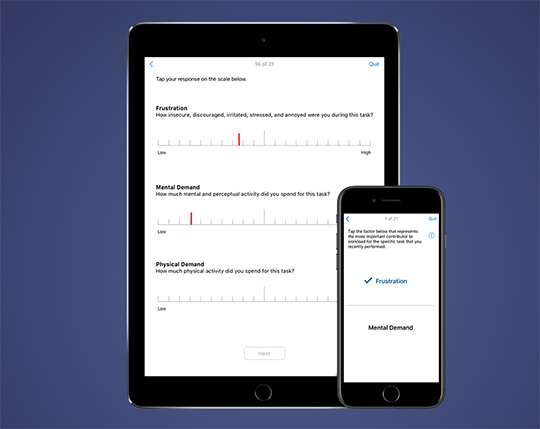A new NASA app is now available that helps researchers evaluate their workloads, on the go.
NASA’s Ames Research Center in California’s Silicon Valley, released on Wednesday February 15, the Official NASA Task Load Index (TLX) app, a new free to download iOS application in the Apple App Store, for use on iPhones and iPads.
The NASA TLX iOS app is available for immediate use by any person or organization (worldwide). It is not necessary to obtain permission from NASA to use the TLX iOS app.

Since the 1980’s, the gold-standard subjective workload assessment tool was pencil and paper questionnaires to conduct assessments of workload scores on Mental Demands, Physical Demands, Temporal Demands, Own Performance, Effort, and Frustration. The legacy version, available only on Windows NT/XP desktop computers, is in the top 5 software downloads for the agency, and the top software download for Ames Research Center with an average of 1-3 download requests per week.
"The Official NASA TLX app addresses a significant backlog of pent up demand from researchers looking for a workload measurement solution that integrates with their modern computer/research environments," said Dr. Brian Gore, Deputy Element Scientist for the Human Factors and Behavioral Performance (HFBP) Element in the Human Research Program (HRP) and TLX project lead at Ames. "Now, users will be able to use their mobile devices (iPhone, iPad, and iPod touch) to collect subjective assessments of workload in a given operational context on a very easy-to-use platform
."
 NASA TLX iOS App User Guide (PDF Format - 1.4MB)
NASA TLX iOS App User Guide (PDF Format - 1.4MB)